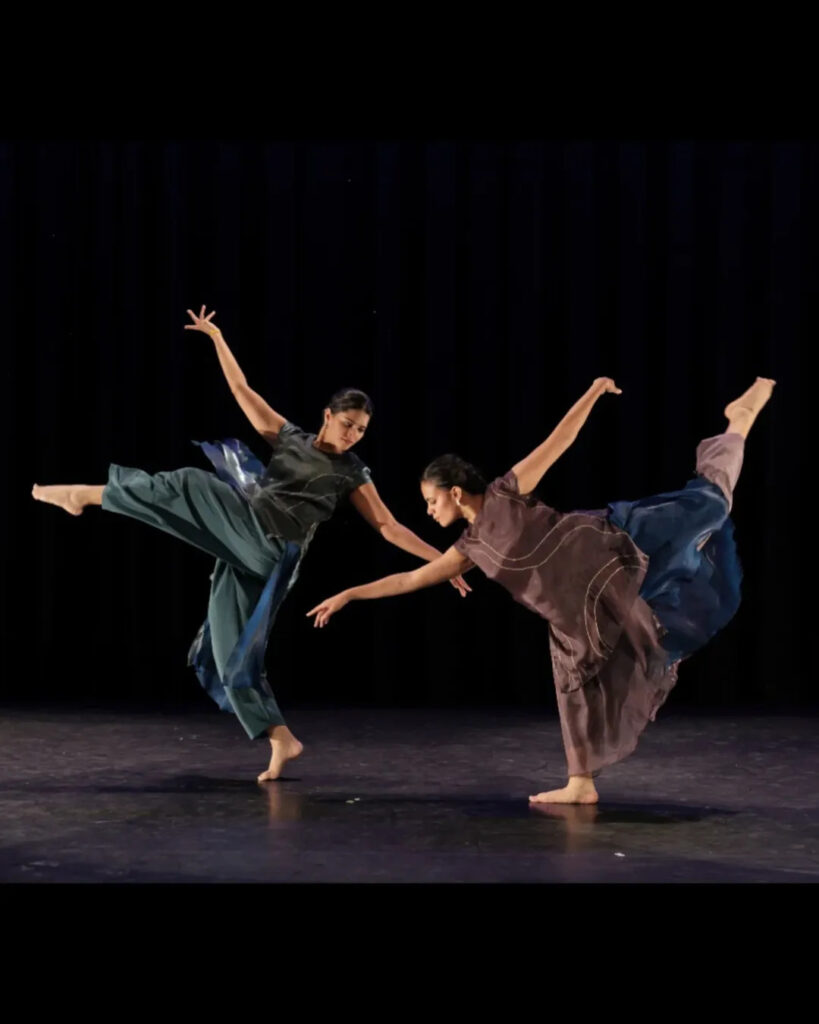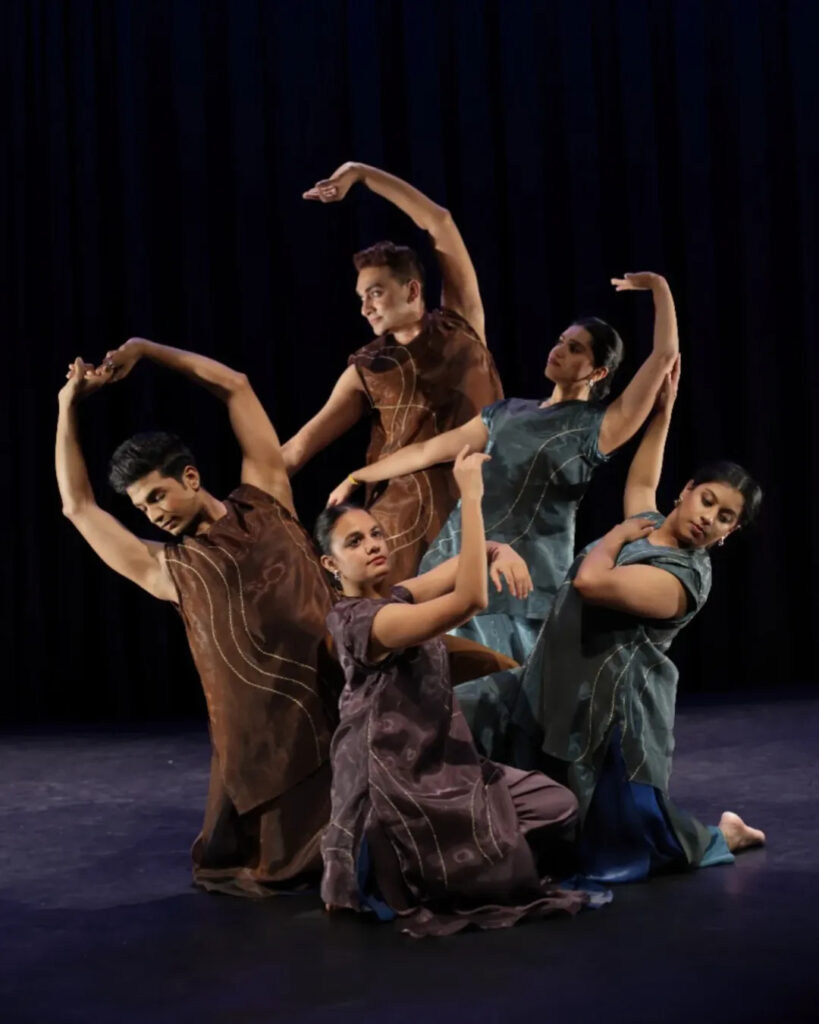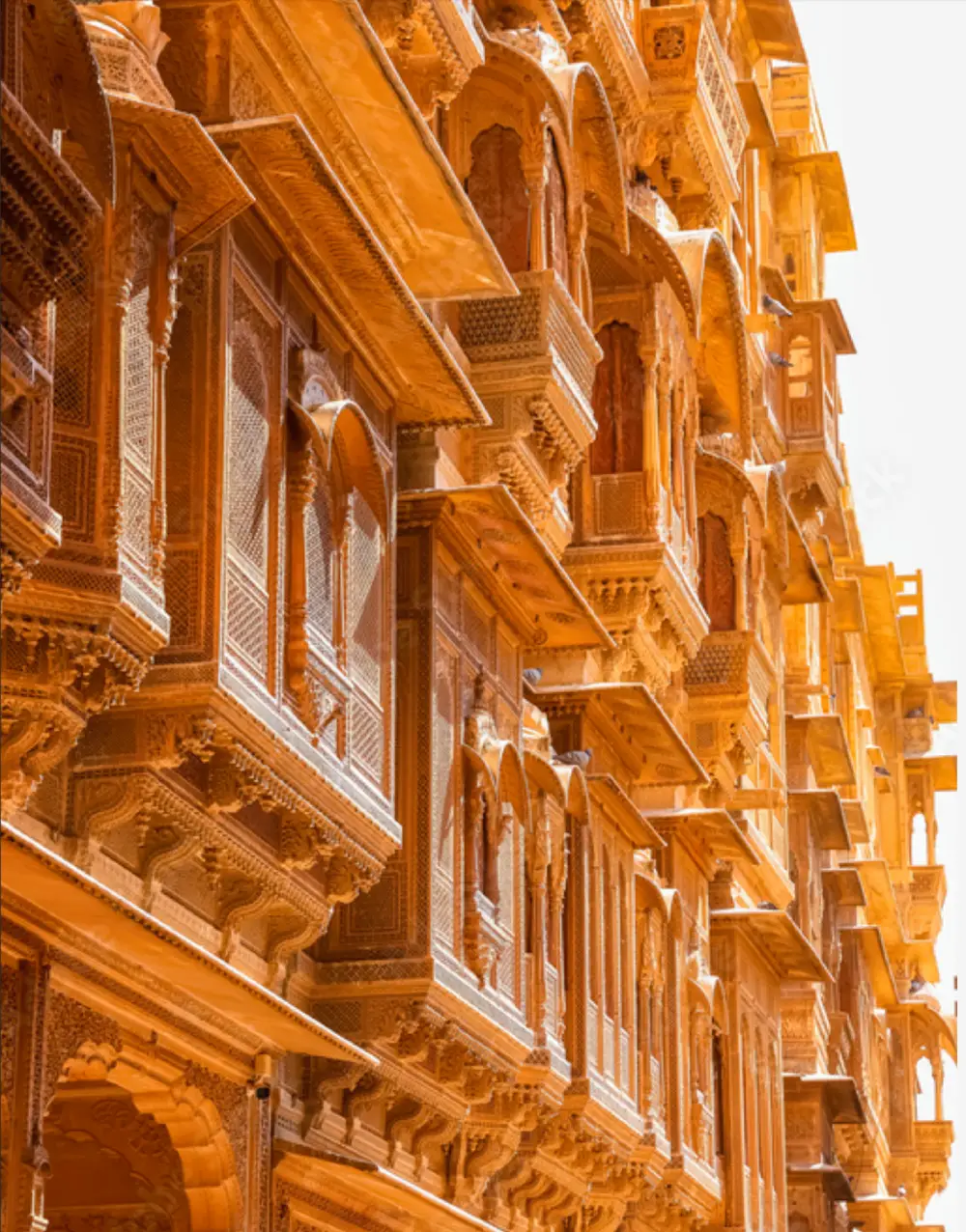Canada based Indian-origin choreographers Lata Pada and Suma Suresh are getting ready to share their new work, Kintsugi, at Kalaa Utsavam 2025, the Indian Festival of Arts at Esplanade. The show will take place thrice during the course of KU 2025, on November 21, 22 and 23 at Esplanade Theatre Studio. While the first two shows will start at 8pm, the last show will have an early start, at 3pm.

Lata is the Founder and Artistic Director Emerita of Sampradaya Dance Creations and one of Canada’s most respected figures in South Asian dance. Suma, now the Artistic Director of the company, has worked under Lata’s mentorship for many years and holds an MFA in Dance Choreography. Together they create work rooted in Bharatanatyam and Kathak while still speaking to today’s audience.
Ahead of the 10-day long Indian arts festival in Singapore, Connected to India’s Sudipto Maity caught up with the duo for a freewheeling chat about dance, their process and Kintsugi.
Kintsugi looks back at powerful moments from the Mahabharata that still feel relevant today. It speaks about strength, healing and how people continue to move forward.
The work is performed with live music by six dancers trained in Bharatanatyam, Kathak and contemporary movement. It has an original score that mixes classical Indian music with electronic sounds to create a rich mood of rupture and repair.
When asked how she begins building a new piece, Lata said, “My creative process usually starts with an experience that has sparked curiosity and compels me to explore the reason for its resonance. Some of the most exiting discoveries are observing nature, human behaviour, reading a poem etc. When the concept gains urgency, the mind goes into an overdrive prompting so many ideas which start arranging themselves into the arc of the work.”
For Suma, the beginning is shaped through shared exploration. She explained: “Once a seed is planted, in this case, by Lata Akka, my role for this project Kintsugi has been to help give it muscles and breath. We begin by exploring imagery, emotional states, and movement possibilities together through improvisation sessions with the dancers and musicians. The first spark is usually a conversation, not choreography.”
They also spoke about blending Bharatanatyam and Kathak with modern or global ideas. They said, “Both traditions carry deep aesthetic principles – rhythm, line, abhinaya. We honour those roots and search for common dynamics that guide the synergy we wish to create in the production. But we also allow contemporary aesthetics, music textures, and narrative structures to shape how these forms evolve onstage. We don’t ‘modernize’ the forms, we allow them to speak in today’s voice.”
Working in a group is another important part of their process. “Our choreographic process involves inviting our dancers into the process with transparency, generosity and respect. We start by acknowledging that every dancer has a unique personal and movement history. They come to our process with their individual voices and styles, vital assets in creating the work. In devising sessions, we allow them to contribute gestures, motifs, or emotional interpretations. We then shape those contributions into a cohesive vocabulary,” both said.
One simple method helps them test if a movement belongs in the piece. “For this process, we have asked the dancer to perform the movement in complete silence and describe the emotional residue it leaves behind. If the movement still communicates its essence without music or embellishment, it belongs in the piece. Often, we have shared poetry pertaining to the theme of the work and invite improvisational exercises to express their interpretations,” the duo added.
Collaboration with musicians, designers and writers is another major element. Kintsugi is choreographed by Lata and Suma and is performed by dancers Tanveer Alam, Rachana Joshi, Harikishan S. Nair, Atri Nundy, Arun Sreekumar, Purawai Vyas. Musicians Praveen Rao, Varijashree Venugopal, B.C. Manjunath composed the score, while Bharat Vyas has been credited as the lighting designer. Nitin Sawant is the technical director of this production.



“Collaboration with other artists is a very exciting process made so much richer by their artistic interventions. We invite musicians, designers, and dramaturgs into the room early so that the work grows from shared vocabulary. Our choreographic voice becomes the thread that weaves their contributions into one fabric,” Lata and Suma explained.
While matching movement to music can be tricky when the rhythm is not classical, their approach remains flexible. “We do take a few approaches. Sometimes we first respond to the texture, not the tala. We ask: what is the emotional temperature of this sound. Only then do we layer rhythm, phrasing, and spatial patterns. Sometimes the other way around,” they said.
When asked about adaptation of a piece, especially while moving from solo to group, or from stage to outdoor space, they said it requires a fresh look. “We re-examine the architecture of the piece. What needs intimacy? What needs scale? Outdoor spaces demand bolder physicality, clearer patterning, and heightened energy. Group adaptations require redistributing the emotional weight across multiple bodies while preserving the core narrative.”
Talking about guiding choreographers and helping dancers think like one, both said they encourage the performer to ask questions. “We constantly ask them ‘Why?’ Why this gesture? Why this gaze? Why this rhythm? When dancers interrogate intention, they automatically begin to shape movement creatively. We also involve them in decisions about transitions, spacing, and phrasing so they see the whole canvas,” they said.
“Finding silence in my day. Those quiet times are full of potential of sparking creativity and exploring ‘out of the box’ thinking,” Lata said, explaining what keeps her creatively active. For Suma, it’s observation. “Watching people, landscapes, hearing stories, really listening. Creativity begins with noticing.”


